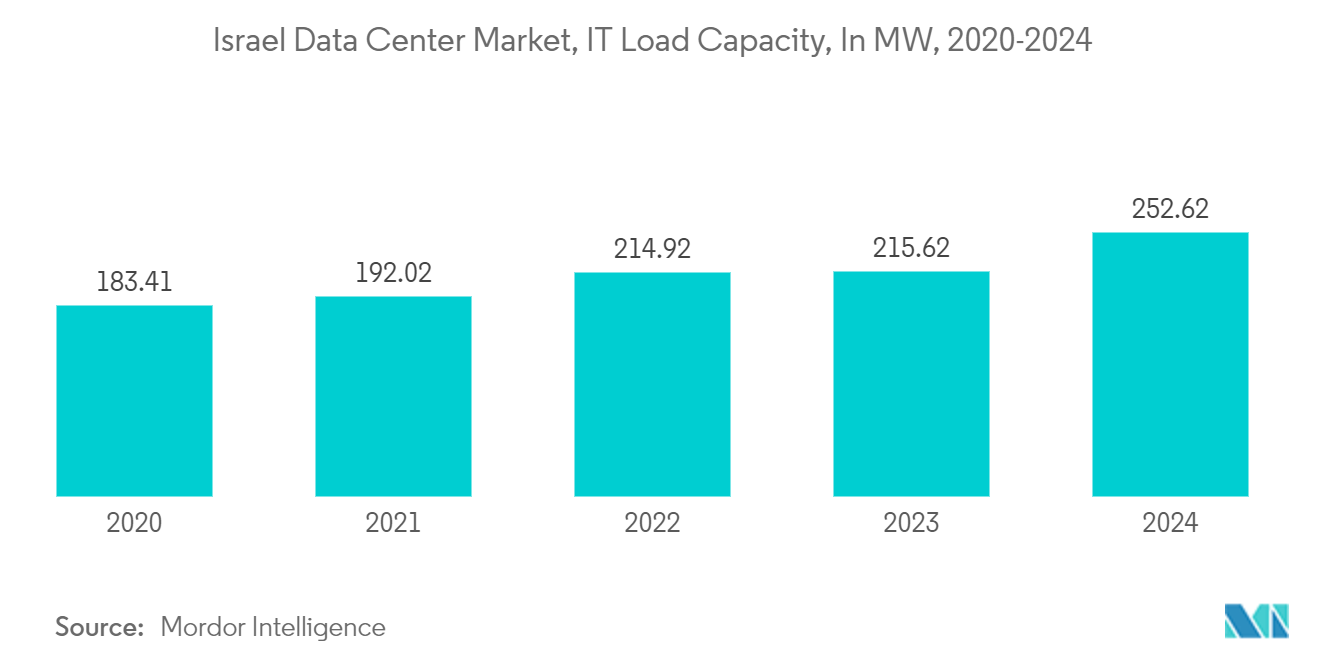Market Trends of Israel Data Center Cooling Industry
The IT and Telecom Segment is Expected to Hold a Significant Market Share
- The Israeli Ministry of Defense has established a secure "landing zone" within Google Cloud. This entry point enables the ministry to utilize Google's computing infrastructure for data storage, processing, and AI services. As per a draft contract from March 2024, the ministry enlisted Google's consulting services to broaden its Cloud access, aiming to enable "multiple units" to leverage automation technologies. The contract indicated that Google charged the Israeli Ministry of Defense more than USD 1 million for these consulting services.
- Between 2022 and 2030, the Google Cloud region in Israel is projected to add a total of USD 7.6 billion to the nation's GDP. Furthermore, by 2030, it is expected to create 21,200 jobs. These figures underscore the burgeoning cloud business landscape in Israel.
- In July 2024, Vultr unveiled its latest cloud data center in Tel Aviv, Israel. This marked a significant milestone in Vultr's mission to democratize access to high-performance, affordable cloud computing. As its inaugural data center in Israel, this facility promises businesses and developers in the region enhanced access to a suite of services. These include high-performance, low-latency cloud computing, cloud computing instances, cloud storage, managed Kubernetes, managed databases, and bare metal services.
- The country is prioritizing the expansion of its 5G network and broadening its coverage. In April 2024, Pelephone activated its 5G network core in Israel, unveiling the MAX G5 network. The new packages promise an enriched customer experience featuring high-speed browsing, prioritized calls, and enhanced network services. Such instances in the market are expected to create more need for data centers, boosting the demand for data center cooling infrastructure in the coming years.

Liquid Cooling is Expected to Hold a Significant Share
- Liquid cooling offers many benefits in data centers, making it an attractive option for cooling computing environments with high performance. It is more energy-efficient than conventional air conditioning. It reduces the need for overcooling and improves the energy efficiency of data centers by providing precise temperature control.
- In Israeli data centers, in order to serve the growing requirement of data storage in the region, the key data center operators are coming up with huge IT load capacities. This results in generating more heat from the servers, which require cooling solutions that provide efficiency and capacity benefits. In February 2024, MedOne, an Israeli data center company, announced plans for two new underground data centers situated just outside Tel Aviv. Spanning roughly 30,000 sq. m (322,920 sq. ft), the facilities will occupy three underground floors. The inaugural facility, positioned north of Tel Aviv, is set to commence operations in 2026, followed by the second facility, slated for a 2027 launch.
- The region is a major technological hub, with its proximity to crucial government facilities, power resources, and technological advancements required for empowering and operating data centers. This also includes several client companies in and around Tel Aviv, leveraging faster internet connectivity through the facilities.
- Direct-to-chip liquid cooling is revolutionizing the Middle Eastern data center landscape, majorly focusing on the United Arab Emirates, Saudi Arabia, Israel, and other hotspots. The Vertiv Liebert XDU Coolant Distribution Unit stands out as a game-changer in data center cooling. Tailored for the intense heat output of cutting-edge technologies like AI and HPC, this system efficiently handles CPUs and GPUs, managing to dissipate a remarkable 75% of the generated heat.


